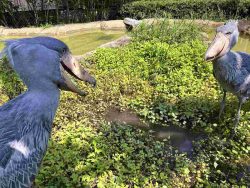Tokyo’s Meiji Kinenkan Holds Wedding Receptions in Hall Once Used by Emperor Meiji to Host Banquets
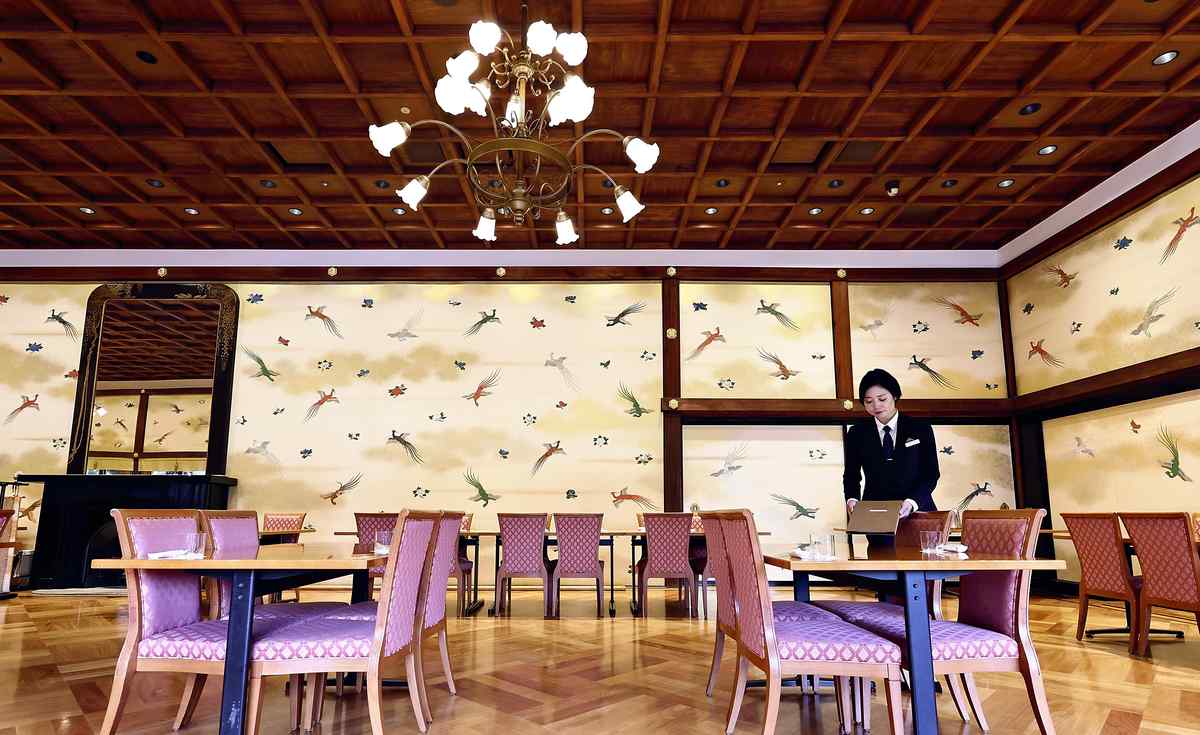
A hall in Meiji Kinenkan’s main building combines Western and Japanese styles of architecture.
16:54 JST, December 30, 2024
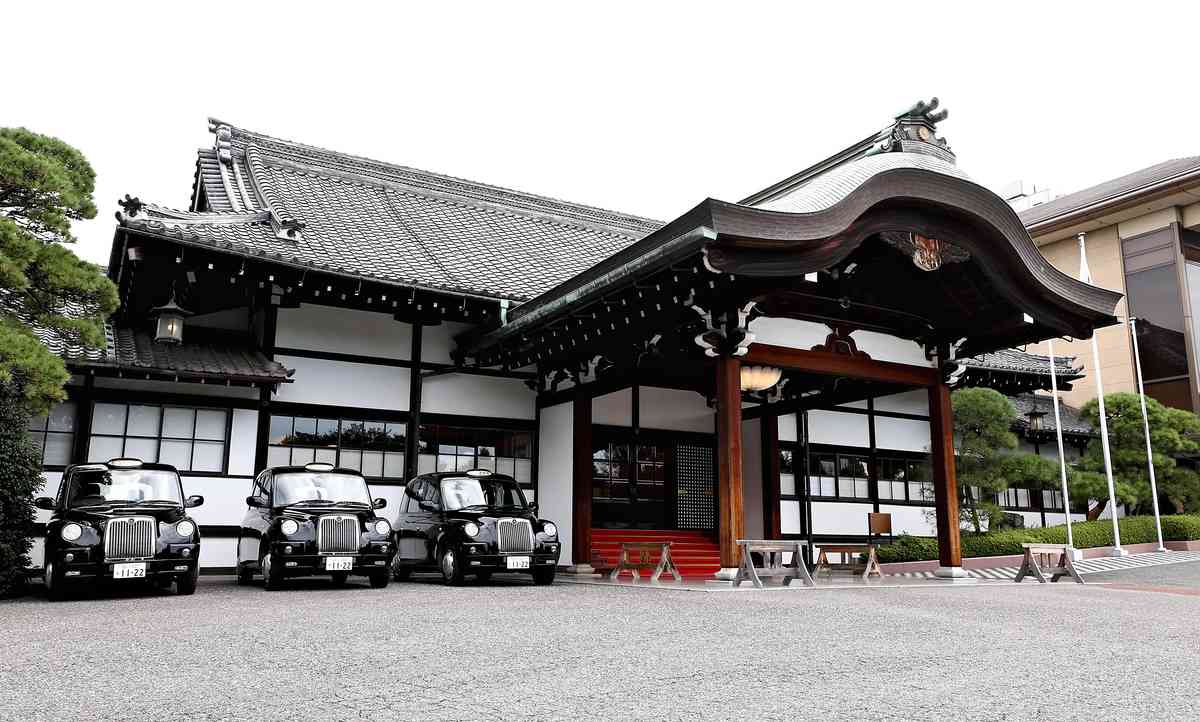
The entranceway of the main building
The “Kinkei” (golden pheasant) hall in Meiji Kinenkan’s main building provides visitors with a sense of serenity from the moment they enter.
The four walls in the hall are decorated with flying golden pheasants, which have long been valued in China as a symbol of good fortune, while light from a chandelier softly illuminates the hall.
This hall has a maximum capacity of 88 people, and the adjacent hall “Emile” has a capacity of 56 people. Both halls are mainly used for wedding receptions on weekends.
Meiji Kinenkan in Minato Ward, Tokyo, was originally a place where Emperor Meiji held celebrations and banquets. It was built in 1881 on the grounds of the Emperor’s Former Akasaka Temporary Palace.
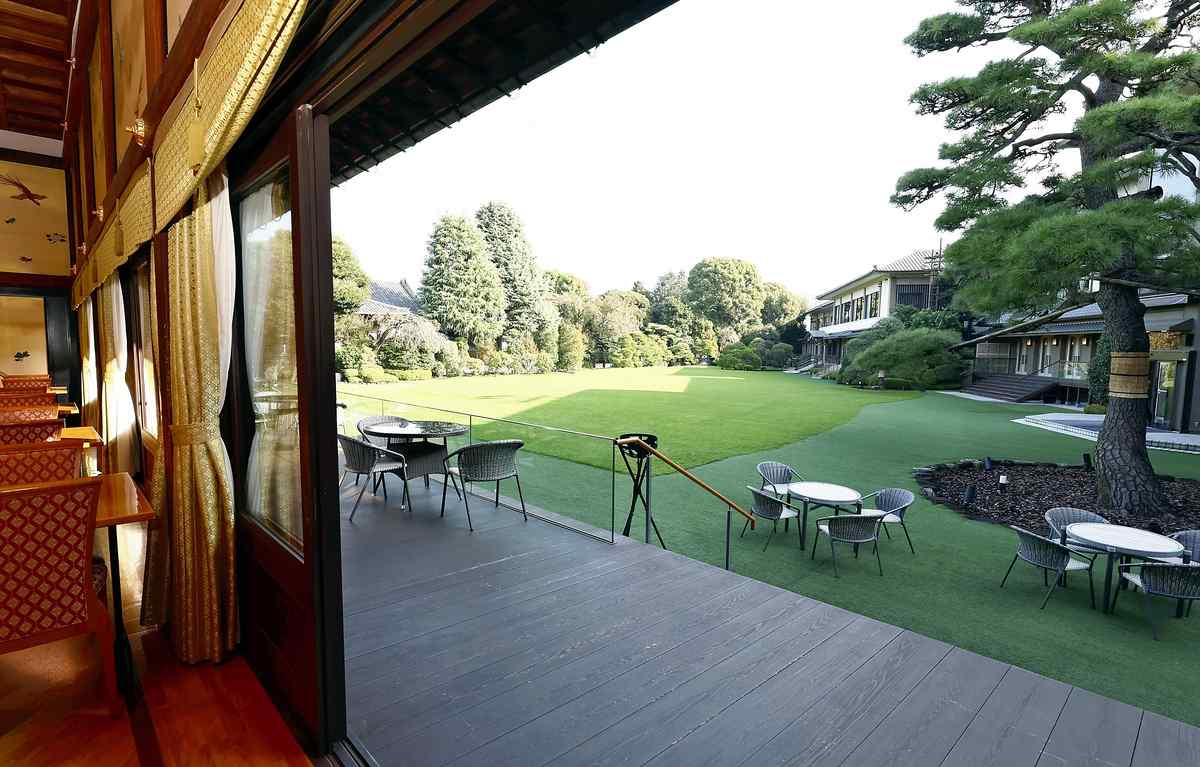
A garden that can be seen from a hall of the main building
In the main building of Meiji Kinenkan, called the “Emperor’s Dining Hall,” the Emperor dined with foreign royalty and held state banquets.
The Privy Council constitutional assembly, which deliberated on the draft of the Constitution of the Empire of Japan, also met in the hall in the presence of Emperor Meiji.
After the completion of the Imperial Palace in 1889, the building ended its role as a place for the Emperor to hold banquets. It was moved to the residence of former Prime Minister Hirobumi Ito in present-day Tokyo’s Oi, Shinagawa Ward.
In 1918, when the building was moved to the present Outer Gardens of Meiji Shrine, where construction had begun, the building was renamed “Kempo Kinenkan” (Constitution Memorial Hall).
In 1947, after World War II, the building started to be used as a wedding hall under the name Meiji Kinenkan, and it has continued to function in this way to this day.
In preparation for its designation as a Tangible Cultural Property of Tokyo in 2020, the main building was renovated, which took three years.

Golden pheasants and peonies painted on a wall of a hall
Reference materials from the time the building was moved to its current location were used to help embed the lighting and air conditioning equipment into the coffered ceiling to make them less noticeable, and the wooden floor was completely replaced to bring it closer to its original appearance.
The paintings of the golden pheasants and peonies on the walls were repaired and hand-painted by professional painters, according to Meiji Kinenkan.
Meiji Kinenkan currently has 17 halls in the main building and the attached new building.
“The main building is the most popular for wedding receptions,” said a Meiji Kinenkan official.
Some couples who held their wedding reception there said the place was historic and they liked the prestigious atmosphere, according to the official.
One can feel the rare power of this historic building in the hall where visitors are blessed.
***
Meiji Kinenkan’s main building
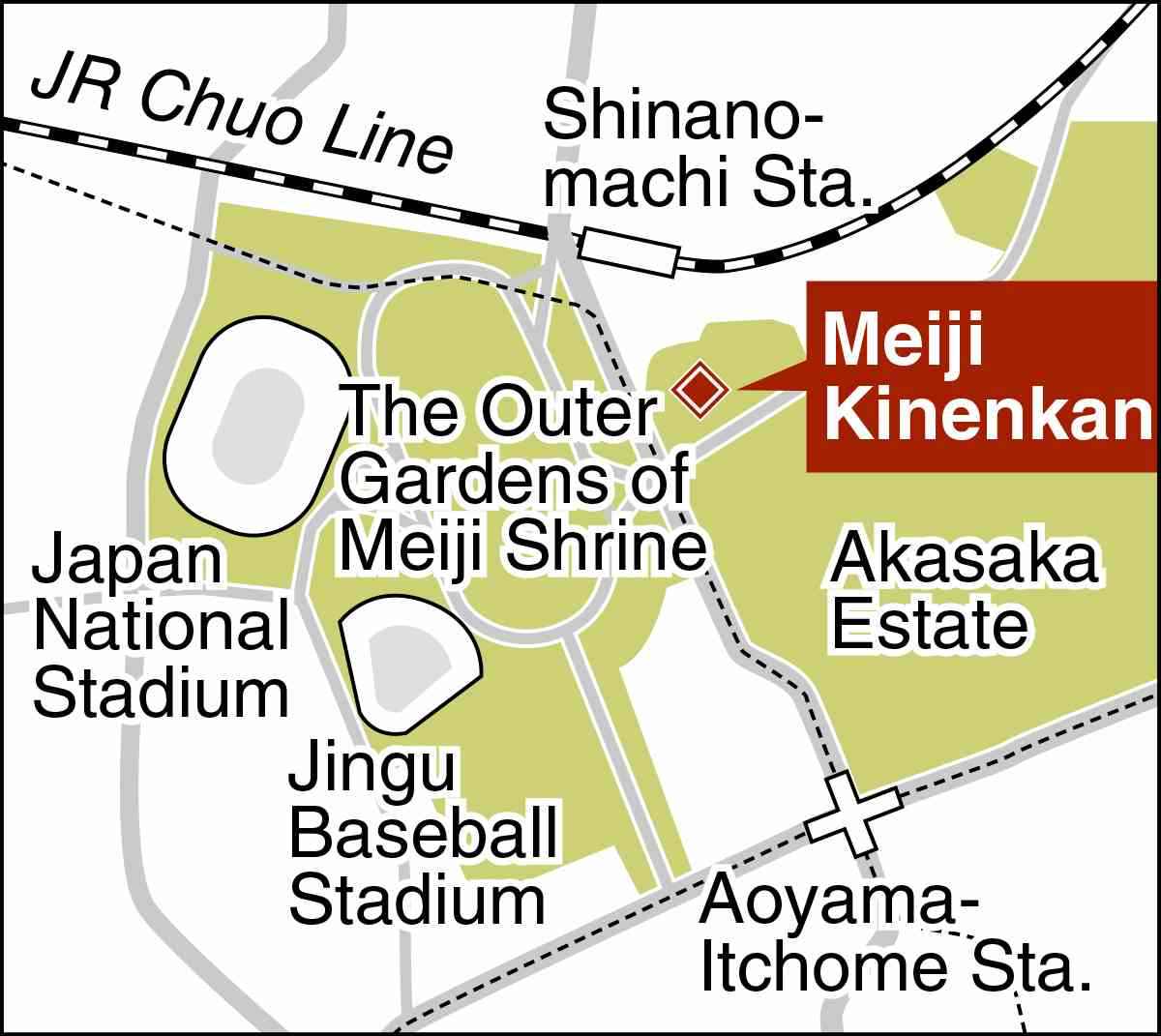
Address: 2-2-23 Moto-Akasaka, Minato Ward, Tokyo
Access: 3-minute walk from JR Shinanomachi Station, 6 minutes on foot from Aoyama-Itchome Station (subway)
Hours: The lounge and dining room Kinkei is open from 10 a.m. to 10 p.m.
Related Tags
"Features" POPULAR ARTICLE
-

Sanrio to Open Museum in Yamanashi Pref. Dedicated to Founder, Exhibits Include Hello Kitty, Other Characters
-

Autumn Foliage Surrounds Visitors to Tokyo’s Showa Kinen Park
-

My Daughter No Longer Speaks to Me, But I Want to See Her and My Grandchild
-

Kumamoto: Public Bath Refurbished as Library Where You Can Chat, Take Photos
-
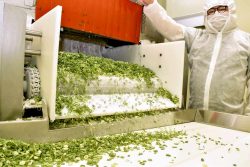
Frozen Vegetables: Demand Rises for Convenient, Tasty Domestic Produce
JN ACCESS RANKING
-

Tokyo Economic Security Forum to Hold Inaugural Meeting Amid Tense Global Environment
-

Keidanren Chairman Yoshinobu Tsutsui Visits Kashiwazaki-Kariwa Nuclear Power Plant; Inspects New Emergency Safety System
-

Imports of Rare Earths from China Facing Delays, May Be Caused by Deterioration of Japan-China Relations
-

University of Tokyo Professor Discusses Japanese Economic Security in Interview Ahead of Forum
-

Japan Pulls out of Vietnam Nuclear Project, Complicating Hanoi’s Power Plans



